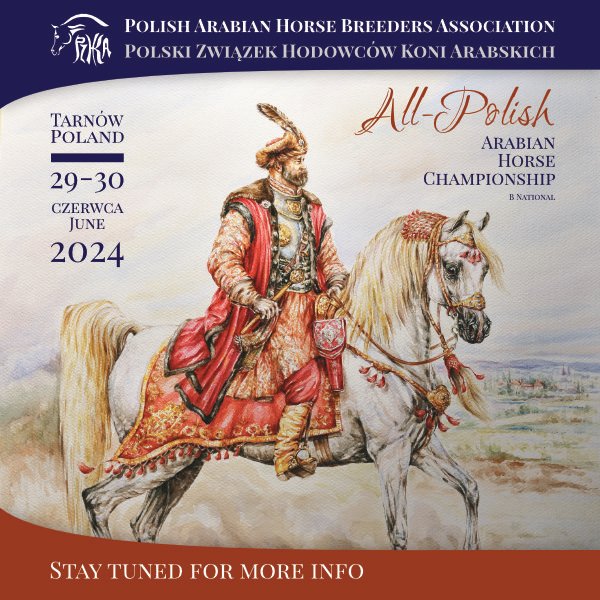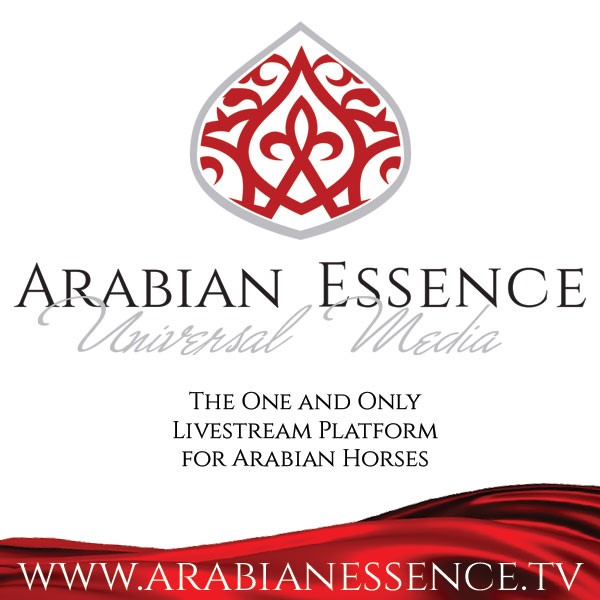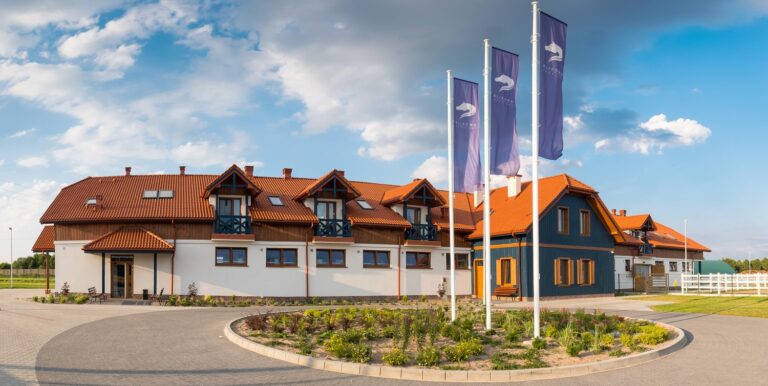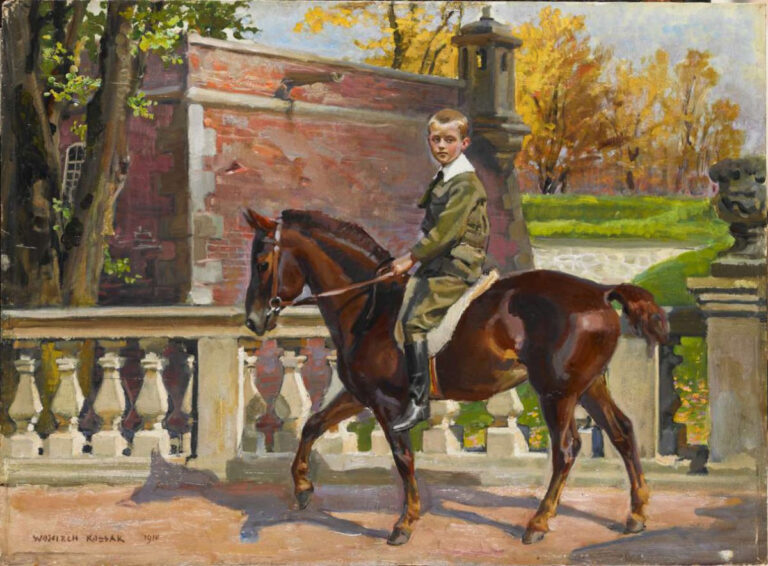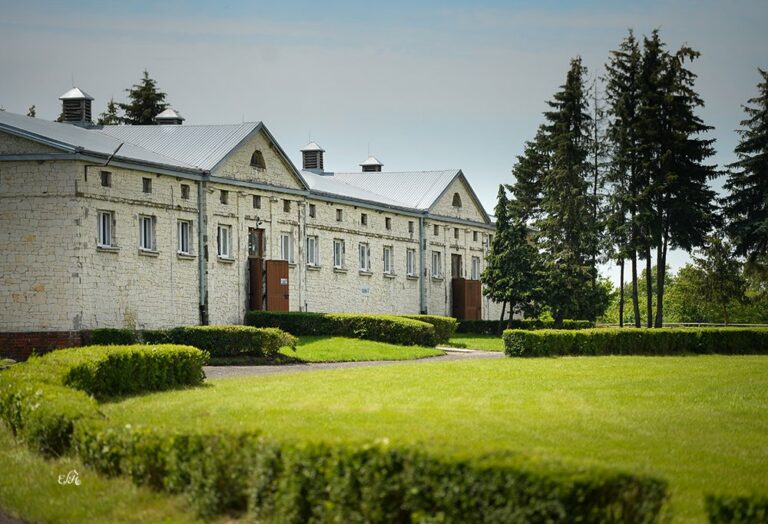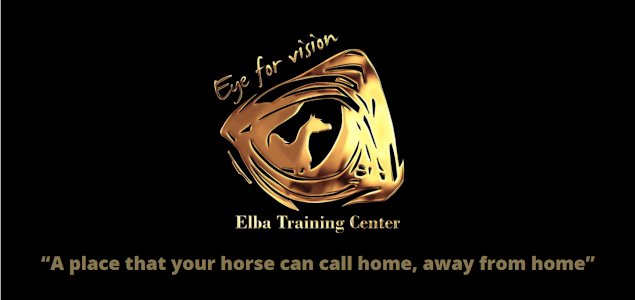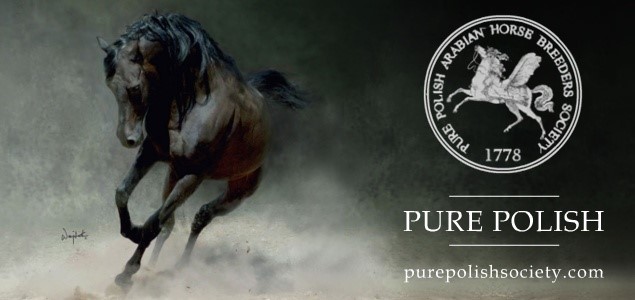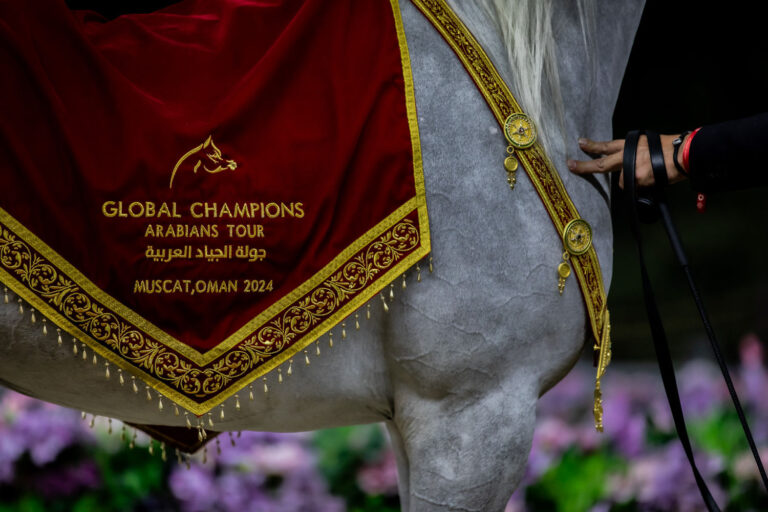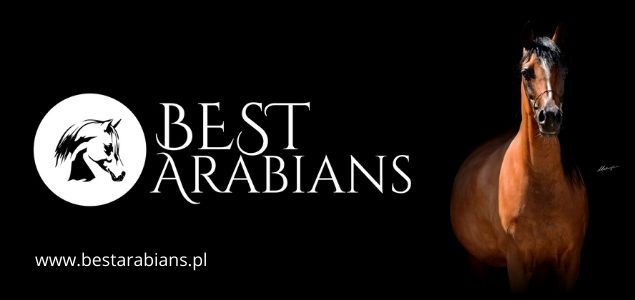
Gallery in Sopot exhibited, among other Polish masterpieces from the Lviv Art Gallery, a painting by Juliusz Kossak* titled “A herd of horses”
(1879). It is one of the most known portrayals of Arabian horses in the history of Polish paintings. As Polish aficionados of the Arabian
horse very well know, it depicts the herd of Dionizy Trzeciak of Taurów. And not only his herd, but also the breeder himself, accompanied by
one of his servants. Dionizy, a robust man with a walrus mustache, as befitted a Borderland nobleman, is standing straight, with one hand in
his pocket, looking at his horses with satisfaction, but also with a caring concern. The servant, dressed accordingly to the customs of those
times, lowers his head, probably as a sign of respect. Is he listening to instructions or being criticized? Or perhaps he’s being praised? The
horses are mares, some with foals, others still in foal, as they appear to be in excellent condition. They graze peacefully. As we have
meticulously counted, there are seven foals. They have long necks, nicely set tails and pleasant heads. Even today they would be considered as
handsome produce. Some of the mares are looking towards their breeder, others are nibbling on the grass. Thanks to this beautiful, tasteful
composition we can feel the pride that the breeder must have felt towards his herd.
Who was Dionizy Trzeciak? We hand over the story telling reins to Krzysztof Czarnota, who travelled to the Ukraine in search of memories of
the Taurów Stud. Here is his account.
Ukrainian villages: Like a discoverer
When traveling across the Ukraine of today, retracing the footsteps of legendary Polish studs, I fell a bit like a discoverer of an old,
non-existent world. Sitting down on the ruins of once grand manors and palaces, pulling out bricks and stones from what remains of formerly
famous barns, plowing through thickets growing over old Polish cemeteries and lighting candles on the graves of great breeders, I have a
strange feeling that I am the first living soul here. When I tell the locals that I came to bow before the old masters, because the horses in
my barns come from the same lines that they bred 150 years ago, I am met with disbelief. I often hear that no family member has come here
since the war and certainly no horsemen have ever been seen. What drives me to travel to these sunken Ukrainian villages is a curiosity to see
the historical, almost sacred places for Polish Arabian horse breeding. Moss-covered ruins and tombstones, old Orthodox and Catholic churches,
finally the vast Podole steppes – they all hold a history of the old Borderland Poland**, its customs, traditions and rituals. Every time I
come here I am accompanied by great emotions. It was no different this time when I arrived at Taurów, the once abode of Dionizy Trzeciak.
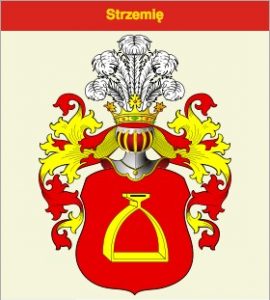
leading to it is made of unbelievably broken asphalt. On dry days it is better to drive along the untreated roadside, which is much more
level. Again I find myself thinking that although today’s western Ukraine has some sort of asphalt roads, everyone still drives on the dirt
running beside them. Right at noon we reach a plate with the name of “Tauriv” on it. The weather is beautiful, we drive to the center of the
village, right up to the Orthodox church where it will be easiest to gain some information. We ask about the manor of old, about the barns,
the horses, but the people just shrug their shoulders. However the eastern hospitality never leaves a needing person without help. Grandma
Aniela is the oldest here, she should remember something about the old days – says one of the inquired locals. In a wink of an eye a yellow
Lada car appears, probably as old as myself, and its driver guides us towards the abode of grandma Aniela.
A tragedy falls upon the herd
Professor Witold Pruski*** positions Taurów as the second among Małopolska studs in the second half of the 19th century. The Trzeciak clan had
bred horses for generations. Dionizy’s father, Leopold, left the stud with 44 mares, mostly in an older Polish horse type. The beginnings of
Arabian horse breeding are considered to date back to 1852, when Dionizy Trzeciak purchased three mares (Zulema, Kokietka and Nelisonka) from
Juliusz Dzieduszycki**** of Jarczowce, as well as the count’s favorite steed, the stallion Step. The stud grew very quickly, reaching over
twenty pure bred broodmares. Just as quickly the Taurów herd gained recognition among its close and further neighbors, both horse users and
breeders. Many stallions from this breeding were purchased and used across the entire Małopolska region. Cavalry officers were convinced that
if an uhlan wanted to buy a good mount, Taurów was the only way to go. Dionizy tested his horses in demanding stamina trials. Arabians were
used in carriages over long distances, pulled sleighs, roamed across the Podole steppes, hunting down wolves and hares. The breeding selection
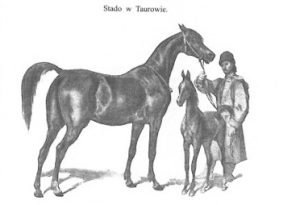
soil. Nothing foreboded the tragedy that would fall upon the herd in 1864. An innkeeper fired by Trzeciak scattered oats with arsenic on the
mares’ pasture in an act of vengeance. At four in the morning the stable boys let out the horses onto the pasture. Several hours later twenty
two mares perished in agony. The hair on Trzeciak’s head turned grey in an instant. All that was left were several youngsters that remained in
the barns. The despairing breeder was comforted by many neighbors, but most significantly by one from the legendary Jarczowce, count Juliusz
Dzieduszycki. A man who preferred actions to words, Dzieduszycki gave his neighbor five mares from his own herd. All of them were either
daughters or granddaughters of the three mares imported from the desert by the count from his expedition to Arabia – Gazella, Mlecha and
Sahara. Trzeciak added his own fillies that remained and the Taurów stud again stood up on its feet. Very quickly it restored its position and
significance, as already in 1877 the mare Guldia was awarded with a gold medal at an exhibition in Lviv.
The lone wolf hunt
Grandma Aniela knows nothing about Trzeciak’s horses, it is rather I that tell her of the old days. But we are able to locate the place where
the manor and stables once stood. It also turns out that the renown breeder was buried at the local cemetery. We later find out that the grave
is visited from time to time by some family member from Poland.
People that bred pure blooded horses in the 19th century were definitely not ordinary. They oozed charisma with a sprinkle of eccentricity.
Dionizy Trzeciak was a Polish nobleman in every sense of the word, whose thatched roof manor was full of tradition, respect for rituals of old
and patriotism, so unfashionable these days. When guests visited, especially horsemen, the tables strained under homemade delicacies, the grey
as a pigeon servant Iwaś took out a hundred year old Hungarian wine from the cellar, whereas the proud host presented his most cherished
Arabians by leading them into the well-lit chambers. Stefan Bojanowski***** described this incredible persona, as well as the entire Taurów
stud, in his book titled “Profiles of oriental horses and their breeders”. There we find an interesting story about the stamina of Taurów’s
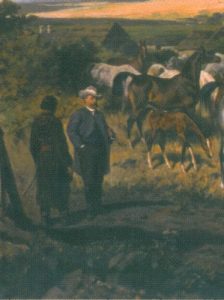
the Jarczowce-bred Step) to a sleigh. Dionizy, equipped with a rifle, jumped aboard and the hunt for the wolf across the steppe began. The
horses galloped after the male wolf for several hours until it was finally possible to reach him within some tens of steps. Then came the
shot. It was only then that everyone remembered about the horses. They returned home well after dark and the grooms immediately took to
rubbing the horses down with straw, but no one expected any positive results. Whereas the next day the geldings, as though nothing had
happened, peacefully nibbled on their hay. Neighbors came to admire the wolf, but mainly the horses. Juliusz Dzieduszycki was to say to the
stud’s owner: If this happened in England, all newspapers would do a story about it. But here it is a normal occurrence, because no horses can
match our when it comes to stamina over long distances.
Touching history
I plow through the thickets growing over the old part of the cemetery, every now and then finding Polish tombstones. Finally, behind three
meter high nettles, stands a large massive family vault. From afar I can see the stirrup – the Trzeciak coat of arms. It was this symbol that
was branded on the most valuable mares in Taurów. The words on the grave can be easily read: Dionizy Trzeciak of Semetycze, owner and tenant
of estates, lived 68 years, died on the 5th of December, 1894. And again comes the feeling that I am directly touching history, here and now.
After Trzeciak’s death the stud was taken over by his nephew Longin Łoboś, who operated it in accordance with his uncle’s instructions. Horses
from Taurów still found their way to many breedings in the Borderlands, but also further. For example Witold Czartoryski purchased mares for
his stud in Pełkinie. The stallion Dżiaf Amira 1897 (Mohort x Ładna Hafizka) found his way to Zdzisław Czartoryski from Pawłosiowo in the
Poznańskie region and three years later became a chief sire at the Neustadt stud, where he was active for the next two decades. Even today,
after more than a hundred years, when we dig deeper in the pedigrees of our Arabian horses, we will easily find ancestors bred in Taurów. They
will usually be representatives of Gazella, Mlecha and Sahara, which Dionizy Trzeciak was especially fond of. One of Janów Podlaski’s iconic
mares, the bay Cerekiew, foundress of a valuable line, descends from the mare Mlecha born in Taurów in 1879. The representatives of this line
are famous for their racing and endurance talents. The stallion Cesihus was second in the Derby and later won the Polish Junior Championships
in endurance over 120 km. Cert is a Polish National Endurance Champion over 160 km. Cekur won the Bandola and Kabaret Stakes at the Służewiec
track in Warsaw, while Czertomelik triumphed in two endurance races over 80 km. This line also produced one of the best sons of Comet, the
stallion Carycyn, exported to the US.
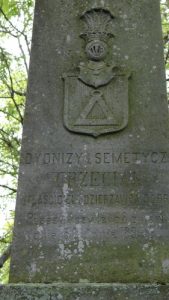
According to studies of several respectable horsemen who wrote about the Taurów stud (Professor Pruski included), after Trzeciak’s death his
stud was taken over by his nephew Longin Łoboś, as Dionizy was said to be a childless bachelor. Meanwhile I was able to determine something
completely different. It turns out that Dionizy had two sons, but as is often the case, none of them had a fondness for equines, so the stud
went into the hands of Łoboś, who loved horses since early childhood and spent a lot of time in the stables. One of Dionizy’s sons was named
Konstanty, who in turn had a son named Stefan. I was told all this by the granddaughter of the latter, who sometimes visits Taurów and her
great-great-grandfather’s grave.
——————————————————————-
*Juliusz Kossak (1824-1899), a Polish painter specializing in battle and historical paintings. He most liked painting horses. His most
important works include “Sobieski at Vienna”, “Stud of Mohort”, “Arrival of Emperor Franz Joseph to Cracow”, “A stud in the Podolia region”,
“A portrait of Count Rzewuski”.
**The Eastern Borderlands – former Eastern lands of Poland, under occupation from 1939 first by the USSR, later the Third Reich. After World
War II the Eastern Borderlands were separated from Poland and annexed to the Ukrainian SSR, Byelorussian SSR and Lithuanian SSR. The
annexation of Poland’s territory was accepted during the Tehran and Yalta Conference. Forced by the superpower countries Poland had to give
the USSR 48% of its territory, losing about 180 thousand square km in the East.
***Professor Witold Pruski, the author of the epoch work “Two Centuries of Polish Arabian Horse Breeding (1778-1978) and its successes
worldwide”, among others.
****Count Juliusz Dzieduszycki (1817-1885), land owner, horseman. In 1840 he set off on a famous, full of adventures expedition to Lvov to
acquire the stallion Bagdad and in 1845 to Arabia, from where he brought the mares Gazella, Mlecha and Sahara. Their significance for Polish
Arabian horse breeding does not need to be emphasized. This stud, similar to the others, did not survive. The only ones to survive the
extermination of the World War I and the Bolshevik invasion in the years 1917-1918 were the mare Pomponia 1902 and three fillies, which sent
to Janów formed the foundations of the stud (Gazella II 1914, Mlecha 1914 and Zulejma 1914). Descending from Pomponia and Zulejma was the
epochal Ofir.
***** Stefan Bojanowski (1850-1910), author of many studies on horses, especially of the Galicia and borderland estates.
Read more:
235 years of Polish private Arabian horse breeding. Has the memory been erased?
Bagdad – a stallion that became part of a legend
Download the PDF version of the article»


